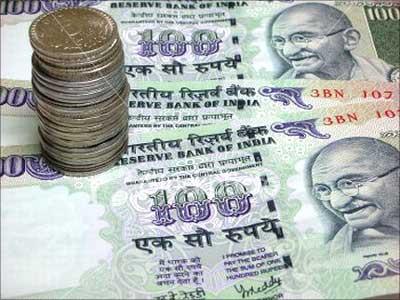 | « Back to article | Print this article |
Why the New Pension Scheme is best for you
After much delay and several near misses, we finally have a pension plan; a social security scheme for 89 per cent of India's workforce that doesn't have a formal retirement solution.
The New Pension System (NPS), as it is now referred to, was fittingly launched on Labour Day, 1 May. Though there are some concerns, such as its taxability, NPS is superbly designed to help you save for your retirement. We feel it merits a place in your portfolio.
The only question that remains is: just when should you sign up for NPS? Find out. . .
Text: Deepti Bhaskaran, Outlook Money
Why the New Pension Scheme is best for you
About NPS
It is a pure defined-contribution product. You can choose the fund option as well as the fund manager. You get a retirement corpus when you turn 60.
Of this, you get 60 per cent in your hands, while the remaining goes into buying you an annuity plan (to ensure pension money) from an insurer.
The system discourages early withdrawal by giving just 20 per cent in your hands and annuitising 80 per cent of the corpus.
Why the New Pension Scheme is best for you
Structure
NPS begins with a mandatory Tier I account and an annual contribution of at least Rs 6,000. A Tier II account, which would offer a withdrawal facility, is expected to be launched in another six months. You can invest in NPS in two ways.
Active choice: You can allocate your funds across three fund options: equity (E), in which a maximum of 50 per cent of the portfolio is allowed; fixed income instruments other than government securities (C); and government securities (G).
Auto choice: Under this, your funds automatically begin with a maximum equity exposure of 50 per cent till the age of 35 years, which tapers off to 10 per cent by age 55. This gives stability to your investment as you near the maturity line.
You can choose from the six designated pension fund managers (see 10 Common Questions Answered). Says Kartik Varma, financial planner and co-founder, iTrust Financial Advisors: "With time, fund performance could be a yardstick, but it is unlikely that fund performance would vary hugely since the funds would be invested in similar products."
Why the New Pension Scheme is best for you
Mechanism
What makes NPS an excellent pension vehicle is its low cost and the ease with which an individual can invest for retirement. It hinges on a Central Recordkeeping Agency (CRA), which captures your data when you open your Tier I account and issues you a Permanent Retirement Account Number (PRAN).
This number remains the same even if you change jobs or location. You would also be given Internet passwords for online transactions.
NPS is the cheapest among retirement products, after the Public Provident Fund (PPF) and the Employees' Provident Fund (EPF), both of which are charge-free. NPS has two sets of charges -- flat and variable.
You would need to pay about Rs 470 as flat charges every year, but this is expected to come down as volumes go up.
The variable charges are custodian charge of 0.0075-0.05 per cent of the fund value per annum and fund management charge of 0.0009 per cent of the fund value per annum. These are the lowest in the industry.
Why the New Pension Scheme is best for you
Challenges
Tax treatment: Though NPS scores in terms of cost and ease of handling, it loses out in terms of taxability. At present, the contributions get tax benefit under Section 80C.
However, at the time of withdrawal, the lump sum would be taxable as per your tax slab. Says Tarun Chugh, director, ICICI Prudential Pensions: "The currency of NPS is its low-cost structure. But what will pull the masses to this scheme is tax benefit. NPS needs a tax treatment similar to that enjoyed by EPF and PPF."
Both EPF and PPF enjoy the EEE tax benefit, under which contribution, accumulation and withdrawal are all tax-free.
Why the New Pension Scheme is best for you
Volumes: For NPS to remain low cost, it is imperative for the volume of investment money to go up.
Says Manish Sabharwal, chairman and co-founder, Teamlease, a staffing company: "Costs come down with large scales and not with regulatory intervention. At the current fund management cost, the crying need is for the volumes to go up. This can happen by bringing funds from PPF, EPF and other superannuation funds under the Pension Fund Regulatory and Development Authority (PFRDA), the interim regulator for NPS. The distinction of government NPS and non-government NPS needs to go, too."
Why the New Pension Scheme is best for you
Distribution: The Points of Presence (PoP) or distribution agents of NPS will charge up to Rs 20 for every transaction. With four mandatory transactions every year, it comes to Rs 80.
Compare this with what an insurer gives to its agents -- 7.5 per cent of the annual premium. Clearly, the incentive for distribution in case of NPS is much lower.
Says Gautam Bharadwaj, director, Invest India Economic Foundation, a think tank involved in financial and pension policy analysis: "Low costs are great for customers, but NPS will struggle with distributor interest since banks and others will prefer to sell you an insurance or mutual fund product that pays much higher commissions. The solution, of course, is to bring down the high cost of buying financial services."
Why the New Pension Scheme is best for you
How does it compare. . .
The numbers show that NPS is right at the bottom of the pyramid despite the low cost, and this is purely because it is taxable on maturity. However, we are confident that eventually NPS would have tax benefits in sync with EPF and PPF. Once that happens, NPS would become an attractive investment vehicle.
. . . with EPF
Contribution in the EPF enjoys tax benefit under Section 80C. Withdrawals, too, are tax-free. While your money grows at 8.5 per cent per annum, your employer matches your contribution to your fund. However, to rely on your EPF alone may be foolhardy -- you may not stick around in a salaried job, you may withdraw your funds periodically, or the rate on the EPF may be reduced. Your EPF corpus may not be sufficient for meeting your retirement needs. NPS is linked to you rather than your employer. So, any change in your job won't affect your investments. Also, NPS is completely portable and even allows you to invest in equity, which is a must for young investors.
. . . with PPF
PPF is also an excellent long-term vehicle to plan for retirement. It is government-backed and gives a guaranteed tax-free return of 8 per cent per annum. Says Maneesh Kumar, head (wealth management solutions), ASK Wealth Advisors: "For young individuals, NPS could be the best alternative after EPF and PPF. NPS lets you invest up to 50 per cent in equities, which outperform bonds over the long term."
Why the New Pension Scheme is best for you
How does it compare. . .
. . . with a mutual fund
Here the comparison is at two levels: costs and fund management. On costs, NPS beats MFs, including the cheaper index funds, hands down. However, for those who wish to kick start their retirement portfolio with equity investment, index funds are a good bet.
They are cheap, are not saddled with a fund manager and their maturity amount is tax-free. NPS is still awaiting that tax edge.
On fund management, Pune-based financial planner Veer Sardesai says: "The best feature of NPS is that the equity component will be invested in index funds. This eliminates the uncertainty of who the fund manager will be, how long will he be there, will he really be able to outperform the benchmark indices. Being a pension product, consistency of management over the long term is very important."
. . . with pension plans offered by insurers
These plans most closely resemble NPS' structure. They have withdrawal penalties and ensure you get pension as they mandate annuitising 66.6 per cent of the fund value at the time of maturity.
Also, they are much cheaper than unit-linked pension plans. Despite the low charge structure in pension plans, NPS scores on cost.
Why the New Pension Scheme is best for you
How does it fit
NPS is definitely the need of the hour and it scores over other products either in cost or in flexibility. But it needs the tax edge to make it comparable. There is merit in waiting.
But if you wish to invest in NPS early, we would advise you keep it your third or fourth priority, after you have exhausted EPF and PPF limits.
You could adopt the age-old strategy. Invest more in equity in the beginning and temper down the exposure as you reach maturity. Adds Hrishi Parendekar, CEO, Karvy Wealth Management: "For a person under 35 years of age who has 20 years to go before retirement, equities would be a far superior product in terms of returns."
Financial planners advise caution because of the tax treatment, while experts are skeptical of the sustainability of low costs. The stepping stone to dealing with this would be the EEE regime that the PFRDA is most certain to get.
Once the tax benefits come through, volumes would certainly increase. Watch this space as the product evolves. It is very likely that this is where you would be parking a big chunk of your retirement funds.










